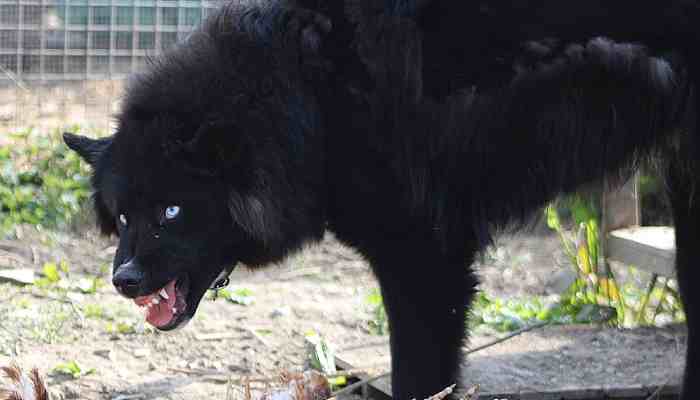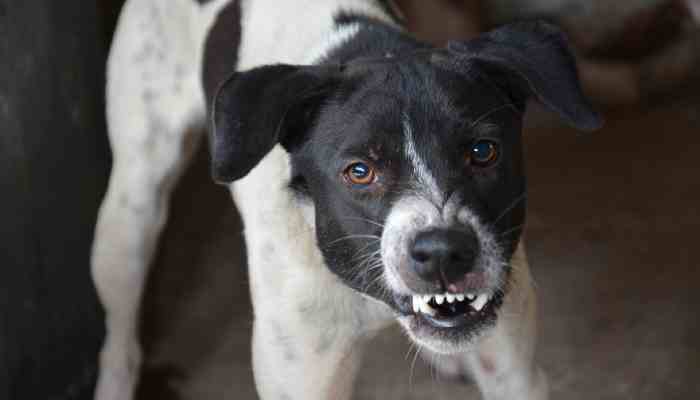Dog aggression can be a serious issue for both pet owners and their furry friends. It can manifest in many different forms, from growling and barking to biting, and can be triggered by a variety of factors. But what causes this behaviour and how can it be addressed? In this post, we’ll dive into the mystery of dog aggression and uncover the causes, forms, and solutions for this challenging behaviour. From genetic and environmental factors to past experiences and socialization, we’ll explore the root causes of dog aggression and arm you with the knowledge you need to keep your pet and those around them safe. So, buckle up and let’s get started on understanding and addressing dog aggression.
Understanding the causes of dog aggression
Dog aggression is a complex issue that can manifest in many different ways, but have you ever wondered what causes it? Is it nature or nurture? The truth is, it’s a combination of both. In this post, we’ll dive into the underlying causes of dog aggression, and how genetics, environment, and past experiences can shape a dog’s behaviour.
From genetics, some dogs may be predisposed to aggression due to their breed or inherited temperament. However, environmental factors such as poor socialization, lack of training, neglect or abuse can greatly influence a dog’s behaviour and may lead to aggressive behaviour. Past experiences can also play a role, a dog who has been subjected to traumatic experiences in the past may develop aggressive behaviour as a form of self-defense.
It’s important to understand that dog aggression is not a one-size-fits-all problem and different cases may require different approaches. By understanding the underlying causes, we can better address and prevent aggressive behaviour in dogs. So, let’s get to the root of the problem and learn how to create a safer, more peaceful environment for our four-legged friends.
Identifying different types of aggression
Dog aggression can take many forms, from growling and barking to biting, but did you know that each type of aggression has its own set of triggers and characteristics? In this post, we’ll take a closer look at the different types of aggression and how to identify them.
Territorial aggression is when a dog feels the need to protect a certain area, such as their home or yard, from perceived threats. Possessive aggression is when a dog becomes aggressive when someone attempts to take away a possession, such as a toy or food. Fear-based aggression is when a dog acts aggressively out of fear or insecurity. And redirected aggression is when a dog’s aggression is directed towards a person or animal, as a result of being prevented from attacking the original target.
Knowing the different types of aggression and their triggers is crucial to addressing the problem. By identifying the type of aggression, you can tailor your approach and choose the most effective methods to help your dog. So, don’t let the different types of aggression confuse you, learn to spot the signs and take the necessary steps to help your furry friend.
Addressing dog aggression
Dog aggression is a serious issue that requires professional help to address. Simply punishing a dog for aggressive behaviour will not solve the problem and can even make it worse. In this post, we’ll explore the different methods for addressing dog aggression and how to choose the right approach for your furry friend.
Consulting with a professional such as a veterinarian or a certified dog behaviourist is essential when addressing aggressive behaviour. They can help you to identify the underlying causes of the aggression and recommend the appropriate course of action.
Behaviour modification is a widely used method for addressing dog aggression. It involves changing the dog’s behaviour through positive reinforcement and rewards for good behaviour, and ignoring or redirecting bad behaviour. Obedience training can also be effective in addressing aggression, as it can help to establish a clear hierarchy and improve the dog’s self-control. In some cases, medication may be prescribed by a vet to help manage the dog’s aggressive behaviour.
It’s important to keep in mind that addressing dog aggression requires patience and consistency. It’s not a quick fix and may take weeks or even months to see progress. But with the right approach and professional guidance, you can help your dog to overcome their aggressive behaviour and improve their quality of life. So, don’t let aggressive behaviour rule your life and your dog’s, get the help you need and see the positive change.
Prevention of dog aggression
Prevention is always better than cure, and this is especially true when it comes to dog aggression. In this post, we’ll explore how to prevent aggressive behaviour in dogs and create a safer, more peaceful environment for your furry friend.
Proper socialization and training are key to preventing aggressive behaviour. Socializing your dog from a young age can help them to become more confident and well-adjusted, which can reduce the risk of aggressive behaviour. Basic obedience training can also help to establish a clear hierarchy and improve the dog’s self-control.
Providing proper care for your dog is also essential. Making sure that your dog gets enough exercise, mental stimulation, and a healthy diet can help to prevent aggressive behaviour. Additionally, avoiding triggers that can lead to aggressive behaviour such as lack of sleep, hunger or boredom can also help to prevent it.
It’s also important to be aware of warning signs that may indicate that your dog is becoming aggressive, such as growling, biting, or showing teeth, and take action before the behaviour escalates.
Conclusion
Dog aggression is a complex issue that requires a comprehensive approach to address. In this post, we’ve explored the underlying causes of dog aggression, the different types of aggression and how to identify them, and the methods for addressing and preventing aggressive behaviour. But it’s important to remember that addressing dog aggression is not a one-time event, it’s a continuous process that requires patience and consistency.
It’s important to keep an open communication with your veterinarian, behaviourist and other professional who can help you to monitor the progress and make any necessary adjustments to your approach. Also, be aware of the warning signs that may indicate that your dog is becoming aggressive again and take action before the behaviour escalates.
Creating a positive and safe environment for your dog is crucial, by providing them with proper socialization, training, and care, you can help them to overcome their aggressive behaviour and improve their quality of life.
Addressing and preventing dog aggression is a lifelong commitment that requires a comprehensive approach, and the help of professionals. By understanding the underlying causes, identifying the different types of aggression and taking the appropriate actions, you can help your dog to overcome their aggressive behaviour and create a safer and more peaceful environment for everyone. So, don’t give up, stay consistent and keep working towards a better life for your furry friend.




